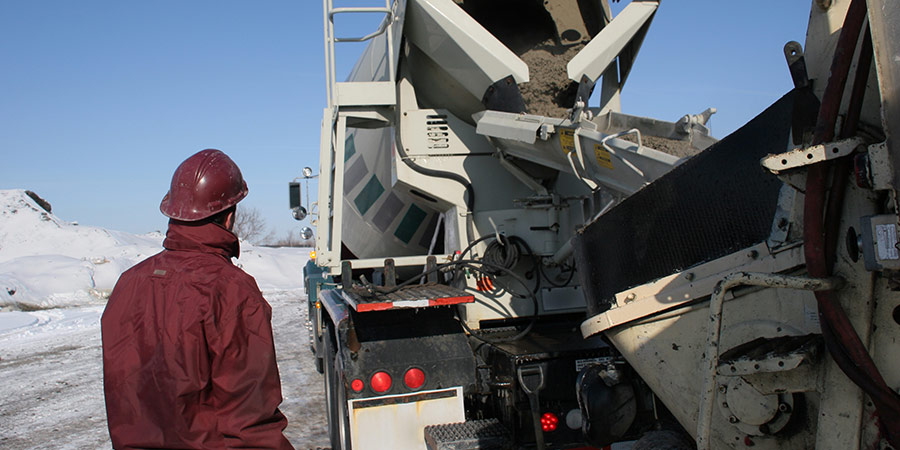Making the most of air entrained concrete

Air entraining agents (AEA) are used to entrain air in concrete when a structure will be exposed to moisture, freeze thaw cycles and deicing chemicals. Concrete is a porous material and water moves through these pores. When temperatures drop below freezing, water in concrete begins to freeze and the powerful expansive forces of freezing water can damage the concrete. Air entraining agents entrain air by generating millions of stable, microscopic air voids in concrete. These uniformly dispersed air voids provide relief from the expansive freezing water, thereby preventing freeze thaw deterioration.
If concrete exposed to freeze thaw cycling is not properly air entrained, the durability of the concrete will be compromised and the service life of the structure will be shortened. Some examples of structures that require air entrained concrete in cold regions include parking structures, bridge decks, highway pavements, curbs, and sidewalks.
Concrete producers, contractors, engineers and specifiers must work together to assure quality concrete practices are followed when using air entrained concrete. Several best practices include:
Use appropriate mix designs and quality materials. The concrete producer must assure the mix design criteria submitted for each project are achievable and meet the applicable specification for air entrained concrete. For example, most specs include a plastic air content range, typically in the 5-8% range. If the plastic air misses the spec on the low end, the concrete may not be freeze durable. Conversely, if it misses the spec on the high end, compressive strength may be compromised. In addition, coarse aggregate and all other concrete mixture constituents should be tested and approved for use in freeze-thaw environments.
Another way to improve the quality of concrete is to use CONCERA® admixtures, which reduce the amount of water needed in the mix, while improving workability.
Learn more about CONCERA® admixtures for control flow concrete
Place, finish, and cure properly. The resistance of concrete to freezing and thawing cycling is also impacted by placing, finishing, and curing procedures. For example, over finishing or using excessive water on exterior flatwork can significantly degrade the quality of the air void system. Additionally, improper or minimal curing can negatively affect the strength and durability properties of the concrete surface. Refer to standards in your region for measuring, mixing, transporting, and placing concrete.
Test! Test! Test! The quantity and quality of plastic air generated on any one given day is dependent on many often-changing variables. These include material (cement, pozzolan, aggregates) variation, ambient/concrete temperature fluctuations, and an array of production and placement techniques. Air entrained concrete should be consistently tested in the field using ASTM-compliant plastic air and unit weight (density) tests to ensure in specification plastic air contents are achieved at the point of placement. Air entraining agent dosage rates should be adjusted at the plant if plastic air contents are out of specification.
Tags
- CONCERA®
- Concrete
- Concrete admixtures
- Ready Mix